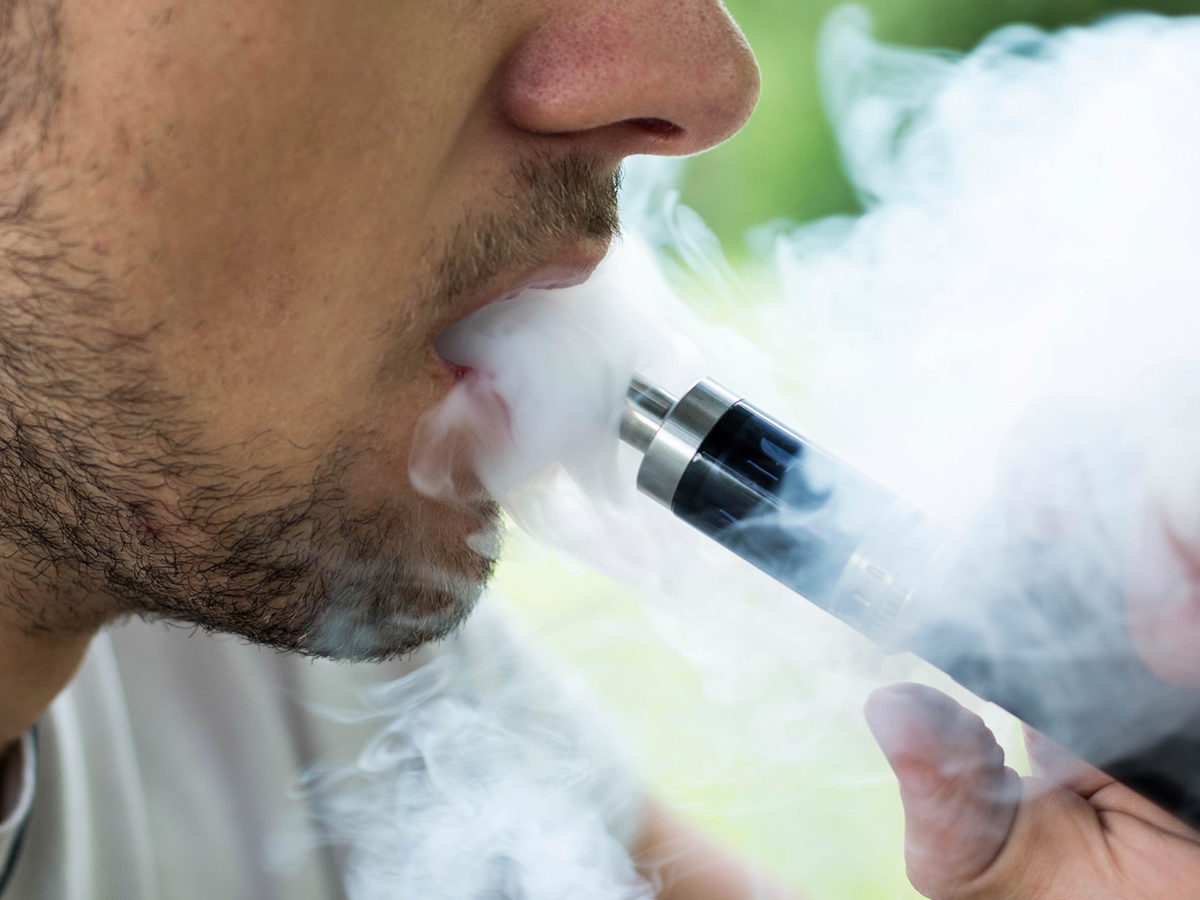“There is minimal data available regarding the direct health effects of e-cig use or vaping, but these products have gained rapid popularity among existing smokers and non-smokers alike, including young adults.” says Peter Shields, MD, deputy director of the OSUCCC and thoracic oncologist with The James. “We are concerned that people assume these products have fewer negative health effects as compared with cigarettes and other tobacco products. The reality is that they are still a tobacco product and people are still inhaling potentially harmful chemicals. They should not be considered a ‘safer’ option until science has the opportunity to catch up with the consumer market.”
On May 5, 2016, the U.S. Food and Drug Administration (FDA) finalized a rule extending its regulatory authority to all tobacco products, including e-cigarettes, cigars, hookah tobacco and pipe tobacco. Prior to this, there was no federal law prohibiting retailers from selling e-cigarettes, hookah tobacco or cigars to people under age 18. The final FDA rule goes into effect Aug. 8, 2016.
The OSUCCC – James research is being done to provide the FDA with hard science, and is funded by the FDA and the National Cancer Institute.
PROJECT 1
Evaluating the Effects of E-Cig Use on Lung Health
The OSUCCC – James is recruiting about 60 current cigarette smokers, e-cig users, smokeless tobacco users, and non-smokers for this pilot study aimed at understanding whether e-cig use impacts lung health differently than traditional cigarettes.
In order to directly assess the impact of tobacco and e-cig use on the lungs, volunteers undergo a bronchoscopy. This is an outpatient test where a doctor inserts a thin tube through the nose or mouth to view the airways. A small sample of lung cells will be collected from fluid in the lungs of healthy smokers, e-cig users, smokeless tobacco users and non-smokers to evaluate differences among the groups. Participants will also be asked to complete questionnaires regarding demographic information, medical history and previous/current tobacco use.
“This will allow us to see – in real time – how the lung tissue of non-smokers, e-cig users and traditional cigarette smokers differs. We are especially interested in understanding how e-cig use impacts immunology factors. This could be an important indicator of negative health impacts and give us clues about the changes in lung tissue that lead to future lung diseases,” adds Shields.
Non-smoker volunteers will be asked to use nicotine-free and flavor-free e-cigs for one month and then undergo another bronchoscopy so that they can document the effects, if any, of e-cigs on the lungs.
All information gathered through the study will be used to evaluate health impact of e-cig use on the lung and help guide the FDA in developing future regulations to make e-cigs safer. Participants do not have to reside in Columbus, Ohio, to participate in the study but they do need to be able to travel to the OSUCCC – James a minimum of two times. Participants will be compensated for their time and receive e-cigs for free.
To learn more, visit clinicaltrials.gov, email ecig-study@osumc.edu or call 1-844-744-2447.
PROJECT 2
Carcinogen-Exposure of E-cigs and Cigarettes - Used Together or Separately
The OSUCCC – James is seeking several hundred current smokers who are otherwise in good health for a study to evaluate the impact of e-cigarettes and other tobacco products on exposure to cancer-causing chemicals and other smoke toxins. In addition, researchers will collect information about how flavorings influence a person’s choice to use the products. The study is being conducted in partnership with the University of Minnesota and Roswell Park Cancer Institute, and is expected to enroll about 600 patients nationwide over five years.
The study has two phases: a baseline phase and an eight-week clinical trial. During the baseline phase, participants will be asked to complete questionnaires and provide urine and mouth cell samples. They will then be will be randomly assigned to one of three study groups for the 8-week clinical trial: e-cig (delivers vaporized nicotine), medicinal nicotine (gum or lozenges) or a control group (continue smoking as normal) for 8 weeks. All participants will receive free products (e-cigs or nicotine replacement therapy) and financial compensation for participation.
“This study is aimed at identifying how different methods of using tobacco impacts the exposures that happen when smoking the product or using e-cigs, but it will also give us important information about how personal thoughts and attitudes toward tobacco products influence how, when and why people use tobacco at all,” explains Shields.
Participants do not have to reside in Columbus, Ohio, to participate in this study but they must be able to come to the OSUCCC – James weekly for a period of three months and have access to a telephone.
To learn more about this study, visit cancer.osu.edu, email comet-study@osumc.edu or call 1-844-744-2447.
